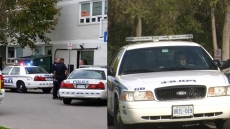OTTAWA — The Liberal party spent more money than ever before to secure victory in Monday's election — but it still didn't come close to the $54 million it could have spent.
Liberal national director Jeremy Broadhurst estimates that the final bill will tally a little more than $40 million.
He suspects the deeper-pocketed Conservatives — who had hoped the longest campaign in modern Canadian history would give them a financial advantage — spent about $50 million.
The length of the 11-week marathon campaign boosted the legal spending limit for each party to an all-time high of $54 million, more than double the limit that would have applied for a more typical five-week race.
Even without spending the maximum, the Liberals borrowed heavily to finance their campaign; but Broadhurst says the party should emerge with, at worst, a small short-term debt after accounting for donations and rebates for election expenses.
He says there's no way the party could have spent the maximum without jeopardizing its long-term survival.
"There's just no way to make that happen without leaving your party in, like, an existential crisis at the end if things hadn't gone well," he said in an interview.

In any event, Broadhurst said banks wouldn't lend that much money to any party now that they no longer get a subsidy for every vote received in an election. Stephen Harper's Conservative government eliminated the subsidy, which had been designed to give parties a guaranteed source of revenue after strict new limits on donations were imposed in 2004.
Every party leverages expected rebates to secure bank loans to finance their campaigns. Each party is entitled to rebates of 50 per cent on national campaign expenses; each candidate who receives at least 10 per cent of the popular vote gets a rebate on 60 per cent of expenses.
Having scored their worst-ever result in the 2011 election, when just 217 candidates were entitled to rebates, Broadhurst said it was a challenge for Liberals to persuade the banks to look beyond the party's immediate past history.
According to preliminary results from Monday's vote, Liberal candidates in all but one of the country's 338 ridings — Alberta's Crowfoot riding — are poised to collect rebates, compared to 308 Conservative candidates and 258 New Democrat contenders.

Conservative spokesmen did not respond to questions about how much money the ruling party spent in a losing bid to win a fourth consecutive mandate for Harper. The NDP said it's still tallying its numbers.
However, Broadhurst said it was evident the Conservatives spent more than either of the other two parties — around $50 million by his reckoning.
He noted that the Conservatives launched their campaign plane immediately after the election was called in early August, whereas both the Liberals and NDP waited several weeks. The Conservatives also carpet-bombed the airwaves with ads, even before the campaign officially started, whereas the other two parties meted out their ads more sparingly, with the heaviest concentration in the final two weeks.
A senior Conservative source has told The Canadian Press that the party will be in debt when all the election costs are added up.



